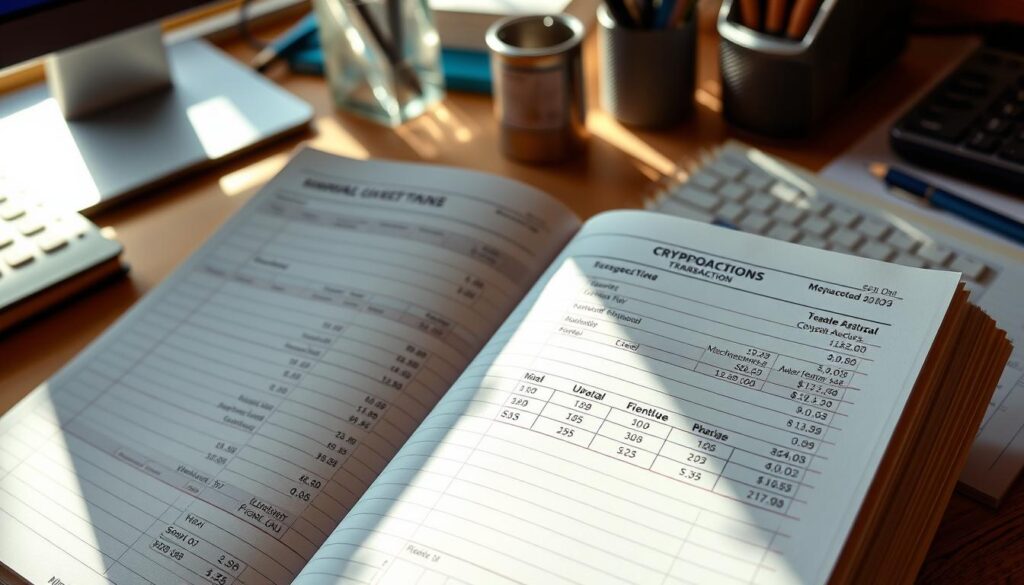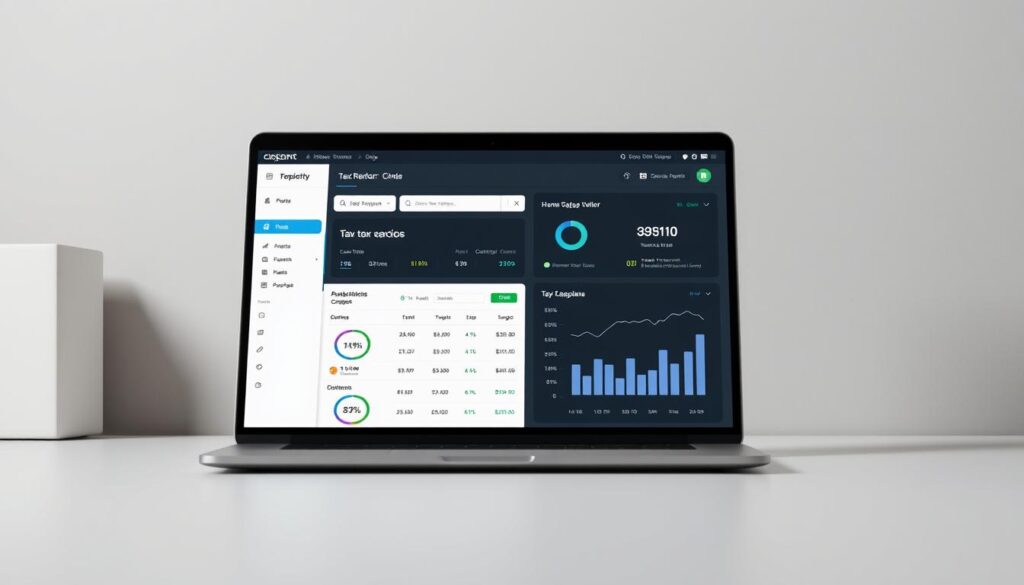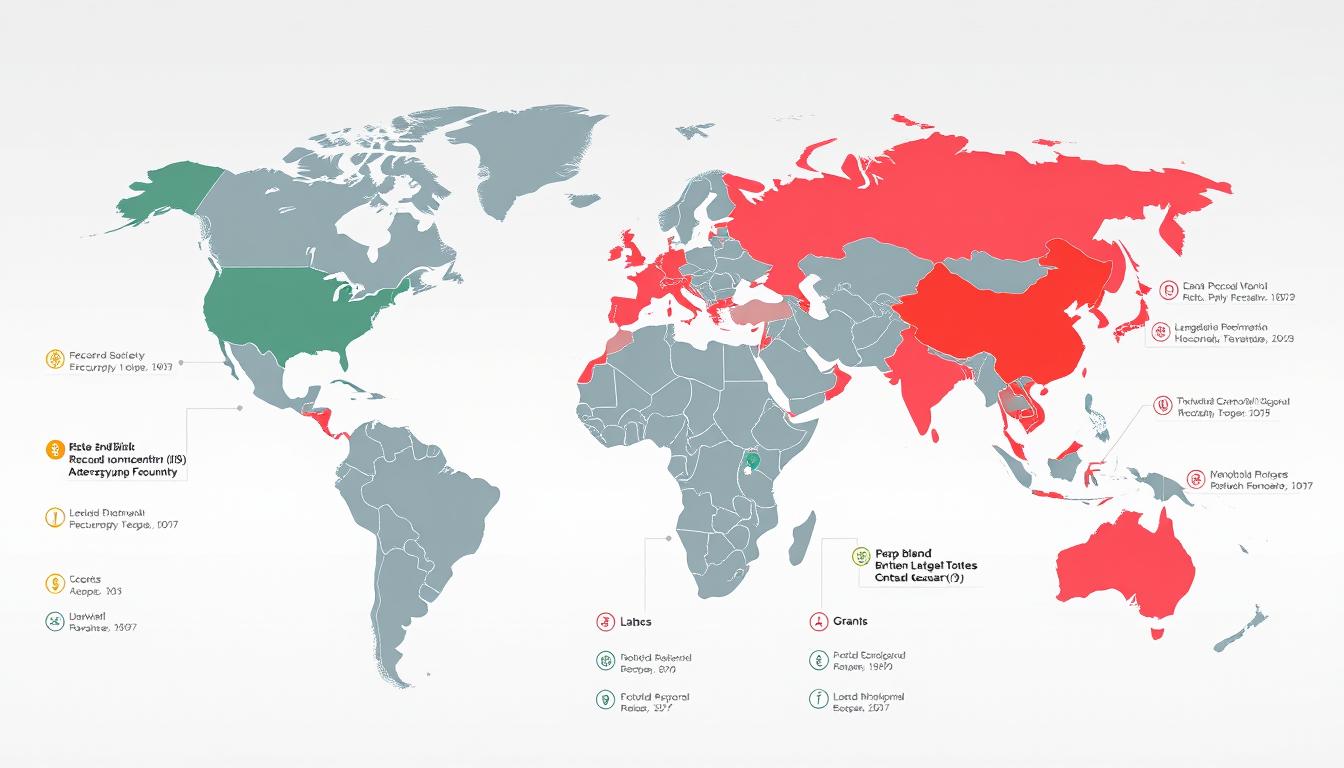Now Reading: Learn How to Report Cryptocurrency Gains for Taxes Accurately
- 01
Learn How to Report Cryptocurrency Gains for Taxes Accurately
Learn How to Report Cryptocurrency Gains for Taxes Accurately

This short guide helps investors record crypto disposals and related income on the right federal forms. It explains which forms and schedules matter and what records make a return clear and defensible.
The IRS treats virtual coins as property under Notice 2014-21. Selling, trading, or spending digital assets triggers capital reporting on Form 8949 with totals on Schedule D and your Form 1040 return.
Collect dates, prices, fees, and full transaction histories from wallets, exchanges, and DeFi platforms. That data builds cost basis, supports ordinary income entries like staking or mining, and keeps you ready for questions.
Expect 1099-B, 1099-MISC, and 1099-NEC now, with 1099-DA arriving in 2026. Even without a form, you must include all reportable activity. This guide previews tools and expert options to simplify filing and stay compliant.
Understanding how the IRS taxes cryptocurrency in the United States
Federal rules treat digital tokens as property, so familiar capital asset rules apply. That means many disposals create taxable events and must be recorded on the right form and schedule.

Crypto as property: capital assets and taxable events
The IRS classifies cryptocurrency as property, similar to stocks or gold. Selling for dollars, swapping one token for another, or using crypto to buy goods triggers a capital event.
Holding an asset in a taxable account is not taxable until you dispose of it. Moving coins between wallets you control is not a taxable event because ownership stays the same.
Capital gains vs. ordinary income from crypto activities
Short-term gains from disposals held one year or less are taxed at ordinary rates. Long-term gains for assets held over one year receive preferential rates (0%, 15%, or 20% in the current year).
Separately, earning crypto through staking, mining, airdrops, interest, referrals, or payment is ordinary income. Recognize income at fair market value on the receipt date and list it on the appropriate tax forms — typically Schedule 1 or Schedule C/SE. Capital disposals go on Form 8949 and flow to Schedule D.
Common questions often focus on whether spending crypto is taxable — it is. Keep clear records so you can match transactions and support basis, holding period, and reported income.
Taxable vs. non-taxable crypto transactions at present
Not every move with digital tokens triggers a taxable event; some actions are disposals and must be recorded, while others are simply transfers.

Taxable disposals: selling, trading, and spending
Selling crypto for U.S. dollars, swapping one token for another, or spending coins at a merchant creates a capital event. The asset is treated as sold at fair market value on the spend date.
That sale can produce short-term or long-term capital gains or losses depending on holding period.
- Sales for USD, crypto-to-crypto swaps, and purchases with a coin or debit card are taxable disposals.
- Report these transactions on the right tax forms even if a platform did not send a 1099.
Non-taxable movements: transfers and tax-advantaged accounts
Moving assets between wallets you control or consolidating accounts does not change beneficial ownership and is usually non-taxable.
Activity inside IRAs or Roth IRAs generally isn’t taxable until distributions under account rules. Keep transfer hashes and wallet ownership proof in case of an audit.
Note: airdrops, staking, and mining are ordinary income at receipt and may also create capital results when sold. Bridge and wrapping steps can be complex—document them and seek guidance for edge cases.
What to gather before you file: transactions, dates, prices, and fees
Before you file, gather every transaction record and timestamp across wallets and platforms.

Building a complete record across wallets and exchanges
Pull CSV exports and API pulls from each exchange and wallet. Include DeFi protocol logs and on-chain IDs.
Save copies of platform statements and any 1099 you receive. Cross-check entries so transfers do not break your ledger.
Tracking fair market value, cost basis, and holding period
Itemize each transaction: date/time, asset, quantity, acquisition price and fees, disposal price and fees, and USD values.
Include purchase commissions and gas in cost basis. Net selling fees from proceeds so gains or losses reflect real money moved.
- Compute holding period from acquisition date/time to disposal date/time; this affects short-term vs. long-term schedule rates.
- Reconcile missing prices using reliable historical market data at exact timestamps.
- Keep CSVs, API exports, and transaction IDs to back up calculations if the IRS requests a review.
- Consider tax software to aggregate histories and generate the forms need for e-file import.
How to calculate your crypto capital gains and losses
A clear gain or loss comes from subtracting your asset’s basis from its net proceeds on the disposal date. This section explains the holding period split, basis rules, netting order, and the annual loss limit so you can complete your schedule and form entries with confidence.

Short-term versus long-term and 2024 rates
The holding period runs from acquisition date until disposal date. Assets held one year or less create short-term results taxed at ordinary rates, up to 37% in 2024.
Assets held more than one year get long-term capital treatment. Long-term rates are 0%, 15%, or 20% in 2024 depending on income.
Cost basis, proceeds, and fee adjustments
Cost basis usually equals purchase price plus acquisition fees and gas. Proceeds equal sale value minus selling fees and transaction costs.
Missing fee entries can overstate taxable gains; track every charge so reported numbers match money actually received or spent.
Netting and the $3,000 loss deduction
Net short-term results first, then net long-term results, then combine both to reach an overall net. Net losses offset gains and up to $3,000 of ordinary income yearly. Any unused loss carries forward indefinitely.
Note that crypto received as income uses fair market value at receipt as basis, which affects later capital outcomes. Many users rely on software to automate calculations and produce the Form 8949 and schedule lines accurately.
Read more on loss treatment at tax-loss treatment.
Filling out Form 8949 for crypto disposals
List each disposal on Form 8949 so every sale and swap appears with its full details.
Separating short-term and long-term items
Use Part I for short-term transactions and Part II for long-term transactions. Sort each line by holding period before you total the page.
Choosing the correct box
Check the box that matches how the platform handled the item: A if basis was reported on a 1099-B, B if a 1099-B was issued but basis wasn’t reported, or C if no 1099-B exists.
If an exchange’s reported basis is incomplete because you moved assets between wallets, select the box indicating basis was not reported and enter the corrected basis.
What to include on each line
Complete every column: description (asset and ticker), acquisition date, sale date, proceeds, cost or other basis, and any adjustment codes and amounts.
Include fees that raise basis or lower proceeds so the net result matches actual cash flow.
- Attach continuation pages or use software that supplies a detailed statement.
- Match 8949 subtotals to the Schedule D short-term and long-term lines.
- Retain transaction reports and exchange statements as support for each line.
| Field | What to enter | Reason |
|---|---|---|
| Description | Asset name and ticker (e.g., Bitcoin BTC) | Clear identification for each disposal |
| Acquired date | Exact purchase or receipt date | Determines holding period |
| Disposed date | Sale, swap, or spend date | Used with acquisition date to classify short/long |
| Proceeds | Sale value in USD less selling fees | Shows gross receipts for the disposal |
| Cost basis | Purchase price plus acquisition fees | Used to compute gain or loss |
| Adjustments | Codes and amounts for fee or basis corrections | Corrects platform reporting or accounts for fees |
Tip: Reconcile date formats and ticker symbols, and resolve rounding differences before you finalize numbers carried to Schedule D.
Reconciling totals on Schedule D and transferring to Form 1040
When totals land from Form 8949, Schedule D becomes the ledger where short‑term and long‑term subtotals come together. Bring each Part I short‑term subtotal and Part II long‑term subtotal from every 8949 into the matching sections on Schedule D.
Schedule D consolidates capital results from all assets — stocks, funds, real estate items and K‑1 entries, and crypto taxes are included along with other sources.
Combining results from all sources of capital gains and losses
Schedule D nets short and long subtotals, applies any prior‑year carryforwards, and computes an overall net of gains losses or a deductible loss.
Where totals flow on your individual tax return
The Schedule D final net then moves to Form 1040 line 7 on your tax return. If you have carryforwards, attach the prior‑year worksheet that supports the amount.
- Verify that each 8949 subtotal matches the Schedule D line to avoid IRS mismatch notices.
- Note wash sale rules may affect non‑crypto assets; laws can change.
- E‑file software often automates transfers, but you remain responsible for accuracy.
- Save a PDF of Schedule D and Form 1040 for records and future carryover tracking.
Answering the digital asset question on Form 1040
Form 1040 now includes a yes/no prompt asking whether, at any time during the year, you received, sold, sent, exchanged, or otherwise acquired a financial interest in a digital asset.
If you earned income in coins, disposed of tokens, or accepted a gift of crypto, answer “Yes.” That covers staking rewards, airdrops, sales on an exchange, and transfers that change beneficial ownership.
Answering truthfully is mandatory. The question is for information gathering and does not by itself increase your tax due. Intentional misstatements can be treated as fraud and carry serious consequences under current tax law.
Practical tip: keep a simple log that notes the event and date that led you to check “Yes” — for example, one airdrop on July 15. This file helps match your tax return entries and supports any forms you include.
- Passive holding after a prior-year purchase may not require “Yes,” depending on facts.
- Base your answer on actual activity, not on whether an exchange issued a 1099.
- Review the IRS instructions on the form for the exact current wording before you file.
Reporting crypto income as ordinary income
When tokens land in your wallet from staking or an airdrop, the fair market value at that moment becomes ordinary income. This rule also applies to mining rewards, platform interest, referral bonuses, and wages paid in tokens.
Staking, mining, airdrops, interest, referrals, and compensation
Recognize income in U.S. dollars at the date and time the asset is credited to you. That USD value becomes your basis for any later sale.
When to use Schedule 1 vs. Schedule C and Schedule SE
Incidental or hobby-like receipts generally go on Schedule 1. Ongoing, business-like activity belongs on Schedule C. If net self-employment income is $400 or more, complete Schedule SE and compute self-employment tax.
- Self-employment tax is about 15.3%: 12.4% Social Security (wage base $168,600 in the year) and 2.9% Medicare.
- Half of that tax is an above-the-line deduction on Schedule 1, which lowers adjusted gross income.
- Keep documented price sources for every receipt to support valuations on your return.
| Event | Where it is reported | Basis at receipt |
|---|---|---|
| Staking payout | Schedule 1 or Schedule C | USD fair market value at receipt |
| Mining reward | Usually Schedule C if business-like | USD fair market value at receipt |
| Airdrop or referral | Schedule 1 (if incidental) | USD fair market value at receipt |
Self-employment from crypto work: Schedule C and Schedule SE
When you earn money from crypto-related work, classify the activity as a business if it is regular, continuous, and profit-driven. Use Schedule C to list gross receipts and subtract ordinary, necessary expenses so you reach net income or a loss.
Deductible business expenses and net income
Common deductible categories include software subscriptions, hardware purchases, internet, education, and a qualified home office. Also deduct cloud services, exchange fees, and professional services that support the activity.
Examples: mining or validator equipment, pro‑rata electricity, cloud node hosting, tax software, and bookkeeping fees. Keep invoices and allocate shared costs (like household power) with a clear method.
Calculating self-employment tax and related deductions
If net profit is $400 or more, file Schedule SE and compute self-employment tax at roughly 15.3% on net earnings. The Social Security portion is capped at the annual wage base; the Medicare portion has no cap and may trigger an Additional Medicare Tax at higher income levels.
- SE tax flows to Schedule 2 and then to Form 1040.
- Half of the SE tax is deductible on Schedule 1, reducing adjusted gross income.
- Pay estimated quarterly amounts if withholding won’t cover expected liability to avoid penalties.
| Activity | Where reported | Key record |
|---|---|---|
| Development, consulting, content | Schedule C | Invoices and payment records |
| Node/validator operation | Schedule C | Equipment receipts and energy allocation |
| Trading as business | Schedule C | Trade logs and platform statements |
Good recordkeeping means saving receipts, invoices, and allocation worksheets. When operations grow complex—multi-entity setups, payroll, depreciation, or cross-border issues—consult trusted tax experts and align accounting methods with IRS standards.
The crypto tax forms you may receive from platforms and payers
Every exchange and payer handles information differently. Expect several federal slips and check each against your own ledger.
Common federal slips and what they cover
- 1099‑B — issued for disposals and sales; lists proceeds and sometimes basis.
- 1099‑MISC — used for rewards, promotions, and incidental payouts recorded as other income.
- 1099‑NEC — reports contractor or nonemployee compensation paid by a platform or client.
- 1099‑DA (planned) — expected in 2026 to report digital asset disposals with copies to the IRS.
When platform basis is wrong and what you should do
Platforms may show incomplete basis when assets moved across accounts. Keep independent cost records and override incorrect entries on Form 8949.
Choose the box that indicates basis was not reported when you supply your corrected numbers. Attach detailed export statements from aggregation software to support adjustments and reduce mismatch notices.
| Slip | Primary use | Action if inaccurate |
|---|---|---|
| 1099‑B | Disposals and sales | Reconcile basis, mark as not reported on 8949 if needed |
| 1099‑MISC | Rewards and miscellaneous income | Confirm USD value and include on correct schedule |
| 1099‑NEC | Contractor payments | Check amounts and request corrected form if wrong |
Note: You must include all reportable activity even if no form arrives. Review 1099s promptly and ask platforms for corrections before filing.
how to report cryptocurrency gains for taxes step by step
Follow a clear checklist that takes transaction history and converts it into a complete federal return. This short roadmap reduces errors and speeds reconciliation.
Calculate, list, and reconcile
Aggregate all exchanges, wallets, and on‑chain activity. Compute per‑lot gains losses using exact timestamps, fees, and USD values.
Enter each disposal on Form 8949, split short‑term from long‑term, and pick the correct box for platform reporting status.
Summarize and finish the return
- Carry short and long subtotals into Schedule D and net with other capital items.
- Add ordinary crypto income on Schedule 1 or Schedule C; run Schedule SE if self‑employment applies.
- Complete Form 1040 and answer the digital asset question honestly.
Quick checks: 8949 totals must match Schedule D and Schedule D must match Form 1040 line entries. Keep CSVs and software reports for support.
Tip: Use crypto tax software to automate aggregation and produce forms compatible with popular e‑file platforms.
| Step | Form | Result |
|---|---|---|
| List disposals | Form 8949 | Line‑level gains losses |
| Summarize | Schedule D | Net capital result |
| Income entries | Schedule 1 / C | Ordinary income on 1040 |
Crypto held in IRAs and Roth IRAs: when activity is not taxable
Trading or exchanging crypto inside an IRA or Roth IRA generally does not create current-year capital tax events. Activity that stays within a qualified retirement account is shielded from annual tax on gains and usually does not affect your individual return while funds remain inside the plan.
You do not list IRA or Roth IRA transactions on Form 8949 or Schedule D for the year. That means the tax forms need for ordinary disposals are not required for inside-account trades. If a custodian issues statements, keep them with your records but do not include the trades on your 1040.
Distributions change the picture. Traditional IRA withdrawals are generally taxable as ordinary income. Qualified Roth IRA distributions can be tax-free, which may boost long-term savings when high-growth assets are used inside a Roth.
- Avoid prohibited transactions and self-dealing; those actions can void tax advantages.
- Verify that your custodian supports compliant crypto custody and understands applicable rules.
- Contribution limits, age rules, and distribution penalties still apply regardless of asset class.
- Losses inside IRAs are not deductible on your personal return.
- Review plan documents and IRS publications before complex moves and consult a retirement or tax advisor when unsure.
Recordkeeping, audits, and compliance in the present environment
Keep organized records so every exchange entry and wallet movement matches the numbers on your return. Clear documentation reduces the chance of mismatch notices and speeds any third‑party review.
Maintaining documentation and reconciling cross-platform activity
Save CSV exports, on‑chain transaction IDs, wallet addresses, and screenshots of price and fee evidence. Keep acquisition and disposal date stamps with USD price references.
Reconcile inbound and outbound transfers so lots remain linked across accounts. That preserves cost basis continuity and helps when a reported form omits basis.
IRS enforcement focus and avoiding penalties
The IRS receives many platform slips and uses analytics to trace flows from KYC exchanges to self‑custody wallets. If its records and your return differ, expect a question.
Negligence penalties apply for careless filings. Fraud carries no statute of limitations and can trigger severe consequences. Perform periodic internal reviews to catch missing disposals or duplicated entries.
- Maintain a written method for valuations and fee treatment to show consistency.
- Work with experts when dealing with DeFi, NFTs, bridges, or complex events.
- Respond promptly to any IRS notice and provide the records that support your return.
| Risk | Action | Result |
|---|---|---|
| Mismatched data | Reconcile exports and on‑chain IDs | Fewer notices and smoother review |
| Missing reported form | File accurately anyway; keep proof | Avoid penalties and late adjustments |
| Complex flows | Engage qualified experts | Correct treatment and reduced audit risk |
Tip: Run a final review before filing, keep a clear audit folder, and consider professional help when questions arise about report crypto taxes or unusual entries.
Tax savings strategies for crypto investors
Smart timing of disposals can cut your annual tax burden and improve long‑term net returns. Use clear rules and simple simulations when planning trades near year‑end.
Long‑term holding and timing disposals
Cross the 12‑month mark where possible. Long‑term capital gains rates (0%, 15%, 20%) often beat short‑term ordinary rates that reach 37% in some brackets.
Shift small sales across tax years to smooth bracket impacts and lower overall tax liability.
Tax‑loss harvesting and carryforwards
Realize losses to offset gains and reduce up to $3,000 of ordinary income this year. Track unused losses carefully; you can carry them forward against future gains.
Crypto is generally not covered by wash‑sale rules now, but monitor legislative updates before acting.
- Pair short and long items for optimal netting on Schedule D.
- Coordinate harvesting with portfolio goals to avoid unwanted risk.
- Use software to simulate scenarios and document every loss and repurchase.
| Strategy | Benefit | Action |
|---|---|---|
| Hold 12+ months | Lower capital gains rate | Delay disposal |
| Harvest losses | Offset gains / $3,000 ordinary | Realize and record |
| Year‑end timing | Bracket management | Move sales across years |
Review income projections, filing status, and deductions before executing plans. Good documentation helps defend your choices when you file tax return and supports prudent savings over time.
Tools and experts that can streamline your crypto tax return
Good software and the right advisor can turn a scattered trade history into a clean, e-file ready package.
Leading crypto tax platforms import transactions from dozens of blockchains and exchanges. They deduplicate transfers, compute cost basis and proceeds, and flag missing basis that needs user input or historical price lookups.
Many tools produce IRS-ready forms, including Form 8949 and consolidated summaries for Schedule D. Exports often integrate directly with TurboTax and TaxAct for a smoother electronic filing process.
Benefits are clear: reduced manual errors, faster closeouts, and audit-ready reconciliation statements you can store with your records.
When to consult tax professionals
Engage tax professionals and trusted experts when you have multi‑chain activity, DeFi yields, NFTs, cross‑chain bridges, DAO compensation, or entity structures. A pro can validate method, classify tricky events, and represent you in IRS inquiries.
For high-volume traders, combine software output with an expert review and schedule a preseason checkup to plan estimated payments and year‑end strategies. Keep both tool exports and advisor notes together for a complete compliance package.
Conclusion
Wrap up, check that every disposal line on Form 8949 flows into Schedule D and that totals land correctly on Form 1040. Keep copies of all exports and the tax forms you used.
Use this guide as a roadmap when you report crypto and when you report tax income from staking or mining. Distinguish capital events and ordinary income; list capital gains on the sale pages and show gains losses where required. Include crypto taxes items even if no 1099 arrived.
Answer the digital asset question on Form 1040 honestly. Leverage software for aggregation and seek expert help with high volumes or complex flows. Perform a final internal review for consistency before you file your return; organizing records now saves time and reduces audit risk.
FAQ
What counts as a taxable crypto event under current IRS rules?
Taxable events include selling crypto for cash, trading one token for another, spending crypto to buy goods or services, and using crypto as payment for work. These are treated as disposals of property and may generate capital gains or losses based on the difference between your cost basis and the fair market value at disposal.
When is crypto treated as ordinary income instead of a capital gain?
Crypto received from mining, staking rewards, airdrops, interest payments, referral bonuses, or as wages counts as ordinary income. You report the fair market value at receipt as income and may later recognize capital gain or loss when you sell those assets.
Which tax forms handle crypto capital gains?
Use Form 8949 to list each disposal with dates, proceeds, basis, and adjustments. Totals from Form 8949 carry to Schedule D, which summarizes capital gains and losses and flows to Form 1040.
What if a platform provides an incomplete cost basis or a 1099?
If a 1099-B, 1099-NEC, 1099-MISC, or preliminary 1099-DA lacks basis, you must reconstruct cost using exchange records, wallet exports, or third-party tax software. Report correct basis on Form 8949 and keep documentation in case of IRS questions.
How do short-term and long-term gains differ for taxation?
Short-term gains come from assets held one year or less and are taxed at ordinary income rates. Long-term gains come from assets held over one year and qualify for lower capital gains rates. The holding period starts the day after acquisition.
Can I deduct crypto losses and is there a limit?
Yes. Capital losses offset capital gains. If losses exceed gains, you can deduct up to ,000 (
FAQ
What counts as a taxable crypto event under current IRS rules?
Taxable events include selling crypto for cash, trading one token for another, spending crypto to buy goods or services, and using crypto as payment for work. These are treated as disposals of property and may generate capital gains or losses based on the difference between your cost basis and the fair market value at disposal.
When is crypto treated as ordinary income instead of a capital gain?
Crypto received from mining, staking rewards, airdrops, interest payments, referral bonuses, or as wages counts as ordinary income. You report the fair market value at receipt as income and may later recognize capital gain or loss when you sell those assets.
Which tax forms handle crypto capital gains?
Use Form 8949 to list each disposal with dates, proceeds, basis, and adjustments. Totals from Form 8949 carry to Schedule D, which summarizes capital gains and losses and flows to Form 1040.
What if a platform provides an incomplete cost basis or a 1099?
If a 1099-B, 1099-NEC, 1099-MISC, or preliminary 1099-DA lacks basis, you must reconstruct cost using exchange records, wallet exports, or third-party tax software. Report correct basis on Form 8949 and keep documentation in case of IRS questions.
How do short-term and long-term gains differ for taxation?
Short-term gains come from assets held one year or less and are taxed at ordinary income rates. Long-term gains come from assets held over one year and qualify for lower capital gains rates. The holding period starts the day after acquisition.
Can I deduct crypto losses and is there a limit?
Yes. Capital losses offset capital gains. If losses exceed gains, you can deduct up to $3,000 ($1,500 if married filing separately) against ordinary income per year, with remaining losses carried forward to future years.
How should I complete Form 8949 when some transactions were reported on a broker statement?
Separate transactions into categories: those with basis reported to the IRS and those without. Mark the correct box on Form 8949 for each group, list each transaction, and include any adjustments in the adjustment column with an explanation code.
Where do Form 8949 and Schedule D totals go on my Form 1040?
After summarizing on Schedule D, the net capital gain or loss transfers to Form 1040—usually line for capital gain or loss. Any ordinary crypto income flows to Schedule 1 or Schedule C and then into Form 1040’s total income.
How do I treat transfers between my own wallets and exchanges?
Simple transfers between wallets you control are not taxable if you retain ownership and don’t change the asset. Keep clear records showing matching dates, amounts, and wallet addresses to prove non-taxable movement.
Are crypto transactions inside IRAs taxable?
Generally no. Buy, sell, or trade activity within traditional or Roth IRAs does not trigger current tax consequences. Tax rules apply when distributions occur from those tax-advantaged accounts.
When should I use Schedule C for crypto income?
Use Schedule C if your crypto activity rises to a trade or business level—for example, professional mining, trading as a business, or providing crypto-related services. That income is subject to self-employment tax, reported on Schedule SE.
What records should I gather before preparing my return?
Collect transaction exports from exchanges and wallets, dates of acquisition and sale, amounts, fiat values at each event, fees, receipts for purchases, and any 1099 forms. Solid records make accurate basis calculations and reconciliation easier.
Can tax software help with crypto returns?
Yes. Dedicated crypto tax platforms aggregate transactions from multiple sources, compute cost basis and gains, prepare Form 8949, and produce summaries that integrate with popular tax-prep software. They reduce manual errors and speed filing.
What audit risks should crypto holders expect and how can I reduce them?
The IRS increased enforcement on digital assets. Maintain detailed records, reconcile exchange reports with your returns, and keep documentation for all adjustments. Using reputable software and consulting a CPA reduces audit exposure.
What tax-saving strategies apply to crypto investors?
Consider holding assets past the one-year mark to access long-term rates, use tax-loss harvesting to offset gains, time disposals to manage income brackets, and consult a tax professional about entity structures or retirement accounts for tax efficiency.
When is it wise to hire a tax professional for crypto issues?
Consult a CPA or tax attorney if you have high volumes of trades, complex DeFi activity, staking and mining operations, international transactions, or if you face an IRS notice. Experts help ensure compliance and optimize tax outcomes.
,500 if married filing separately) against ordinary income per year, with remaining losses carried forward to future years.
How should I complete Form 8949 when some transactions were reported on a broker statement?
Separate transactions into categories: those with basis reported to the IRS and those without. Mark the correct box on Form 8949 for each group, list each transaction, and include any adjustments in the adjustment column with an explanation code.
Where do Form 8949 and Schedule D totals go on my Form 1040?
After summarizing on Schedule D, the net capital gain or loss transfers to Form 1040—usually line for capital gain or loss. Any ordinary crypto income flows to Schedule 1 or Schedule C and then into Form 1040’s total income.
How do I treat transfers between my own wallets and exchanges?
Simple transfers between wallets you control are not taxable if you retain ownership and don’t change the asset. Keep clear records showing matching dates, amounts, and wallet addresses to prove non-taxable movement.
Are crypto transactions inside IRAs taxable?
Generally no. Buy, sell, or trade activity within traditional or Roth IRAs does not trigger current tax consequences. Tax rules apply when distributions occur from those tax-advantaged accounts.
When should I use Schedule C for crypto income?
Use Schedule C if your crypto activity rises to a trade or business level—for example, professional mining, trading as a business, or providing crypto-related services. That income is subject to self-employment tax, reported on Schedule SE.
What records should I gather before preparing my return?
Collect transaction exports from exchanges and wallets, dates of acquisition and sale, amounts, fiat values at each event, fees, receipts for purchases, and any 1099 forms. Solid records make accurate basis calculations and reconciliation easier.
Can tax software help with crypto returns?
Yes. Dedicated crypto tax platforms aggregate transactions from multiple sources, compute cost basis and gains, prepare Form 8949, and produce summaries that integrate with popular tax-prep software. They reduce manual errors and speed filing.
What audit risks should crypto holders expect and how can I reduce them?
The IRS increased enforcement on digital assets. Maintain detailed records, reconcile exchange reports with your returns, and keep documentation for all adjustments. Using reputable software and consulting a CPA reduces audit exposure.
What tax-saving strategies apply to crypto investors?
Consider holding assets past the one-year mark to access long-term rates, use tax-loss harvesting to offset gains, time disposals to manage income brackets, and consult a tax professional about entity structures or retirement accounts for tax efficiency.
When is it wise to hire a tax professional for crypto issues?
Consult a CPA or tax attorney if you have high volumes of trades, complex DeFi activity, staking and mining operations, international transactions, or if you face an IRS notice. Experts help ensure compliance and optimize tax outcomes.
















